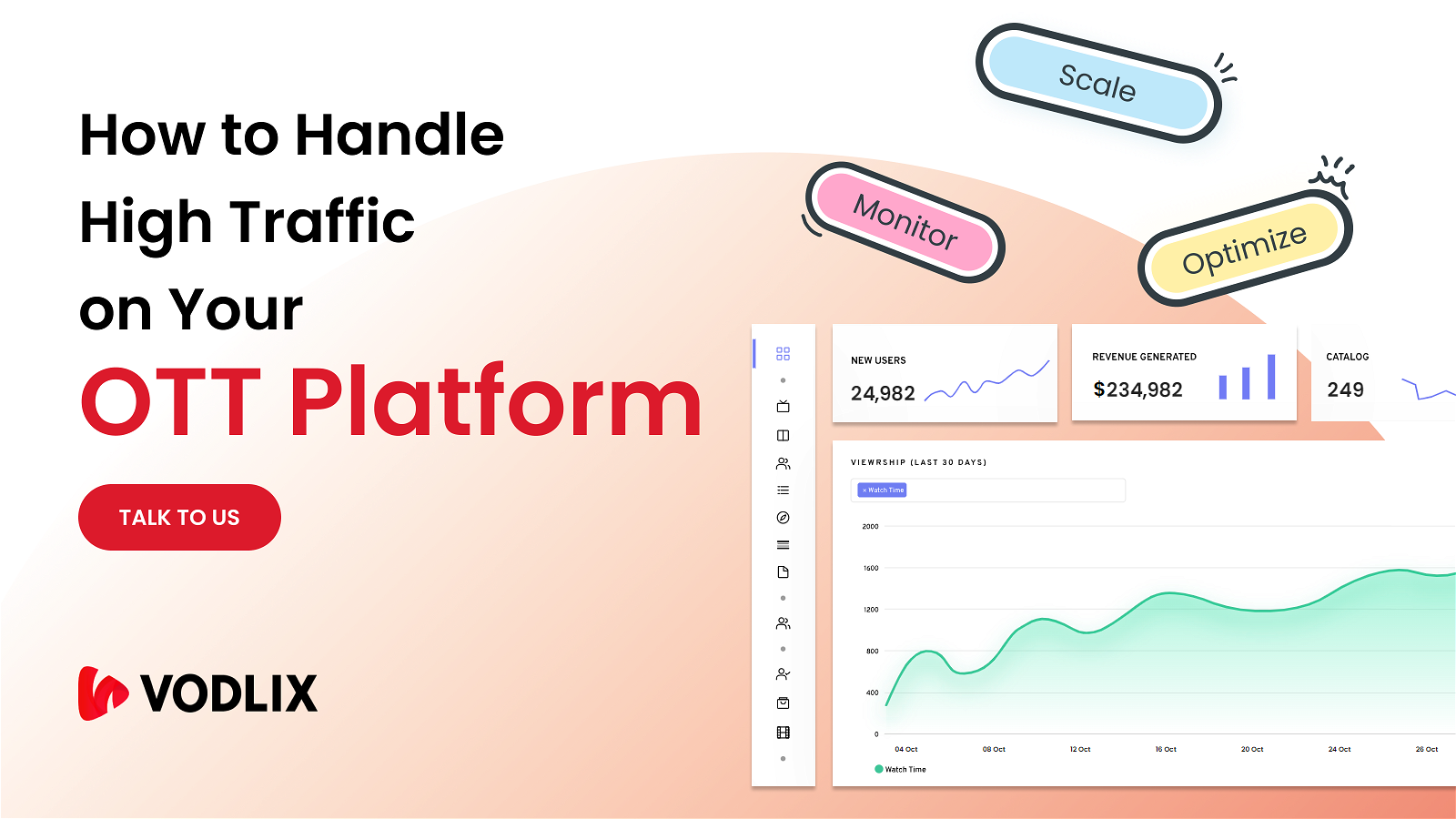In the fast-paced realm of (Over-the-Top) OTT platforms, success often brings with it the challenge of managing high traffic. As your viewer base grows and demands peak, ensuring your OTT platform can handle the influx of users is crucial for maintaining a seamless and satisfying experience. This article dives into strategies for effectively scaling up your OTT platform to handle high traffic volumes.
Investing in a robust infrastructure is the foundation of handling high traffic. Cloud solutions, such as Amazon Web Services (AWS) or Microsoft Azure, offer scalable resources that can adapt to changing demand. By utilizing these platforms, you can dynamically allocate computing power, storage, and bandwidth as needed, preventing crashes and slowdowns during traffic spikes.
CDNs are designed to distribute content efficiently by caching and delivering it from servers closest to the user's geographical location. This reduces latency and speeds up content delivery, ensuring smoother streaming even during periods of high traffic. Popular CDNs like Akamai, Cloudflare, and Fastly can be integrated with your OTT platform to enhance performance.
Load balancing involves distributing incoming traffic across multiple servers to prevent overloading any single server. This technique optimizes resource utilization and minimizes downtime. Implementing hardware and software-based load balancers ensures that user requests are evenly distributed, enhancing overall performance and stability.
Optimize your content for efficient streaming by using adaptive bitrate streaming. This technique adjusts the quality of the video based on the viewer's internet speed, ensuring smooth playback without buffering. By offering multiple quality levels, you accommodate a wide range of user connections and reduce the strain on your servers.
Live streaming events often generate surges in traffic—Prioritise planning and stress testing before major live broadcasts. Simulate high-traffic scenarios to identify bottlenecks and weak points in your infrastructure. Additionally, consider using a content delivery network specifically designed for live events to ensure uninterrupted streaming.
Deploy robust monitoring tools to keep a constant eye on the performance of your platform. Real-time analytics help you identify trends, anticipate traffic spikes, and troubleshoot issues before they escalate. Utilise tools like New Relic, Datadog, or Google Analytics to gain insights into user behavior and platform performance.
As you anticipate growth, incorporate scalability into your platform's design from the start. Choose technologies and architectures that allow easy scaling horizontally (adding more servers) or vertically (upgrading server resources). This proactive approach minimizes disruptions during periods of high traffic.
Ensure that your platform has a robust disaster recovery plan in place. Implement redundancy for critical components like databases and servers to minimize downtime in case of failures. Regularly test these mechanisms to validate their effectiveness.
In the dynamic landscape of OTT platforms, the ability to handle high traffic is paramount to sustaining success and keeping viewers satisfied. From investing in a robust infrastructure to leveraging content delivery networks and implementing load-balancing techniques, the strategies discussed above lay a solid foundation for scaling up your OTT platform effectively. However, in this era of digital streaming, having a reliable partner like Vodlix can significantly enhance your platform's capabilities.
Vodlix offers a range of features designed to support your efforts in managing high-traffic volumes. Its cloud-based infrastructure ensures scalability and flexibility, adapting to changing demand seamlessly. With Vodlix's integration of Content Delivery Networks, you can efficiently distribute content to users worldwide, reducing latency and ensuring smoother streaming experiences. Load balancing and content optimization are also made easier with Vodlix's user-friendly tools, enhancing overall platform performance and stability. Moreover, Vodlix's robust monitoring and analytics capabilities empower you to stay ahead of trends, anticipate traffic spikes, and troubleshoot issues proactively. When planning for scalability and disaster recovery, Vodlix's expertise can be a valuable asset, ensuring the continuity of your services during high-traffic situations. In conclusion, the strategies outlined in this article, combined with the support and features offered by Vodlix, can equip you with the tools needed to navigate the challenges of high traffic on your OTT platform effectively. By implementing these strategies and leveraging Vodlix's capabilities, you can provide viewers with a seamless and satisfying streaming experience, fostering long-term success in the competitive OTT market.



.png)


